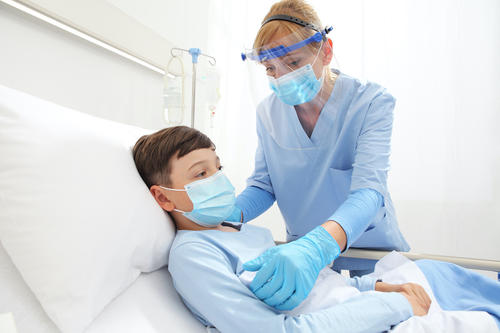Study counts COVID-19 pediatric hospitalization cases to help states prepare for future

Early evidence with COVID-19 suggests that children are less susceptible to infection and have a lower risk for symptomatic and severe disease. However, pediatric patients are not immune from the virus and can become dangerously ill from it. New research from the University of Minnesota School of Public Health (SPH) and Carlson School of Management highlights the need to be prepared to treat children for COVID-19 by showing that hospitalization rates for pediatric cases can differ widely by state.
The study was led by SPH Ph.D. student Zachary Levin and published in the journal JAMA Pediatrics. The research was co-authored by a team at the Carlson School led by Professor Pinar Karaca-Mandic.
The study team used data collected by the University’s COVID-19 Hospitalization Tracking Project, a joint effort by the Carlson School’s Medical Industry Leadership Institute (MILI) and the Management Information Systems Research Center.
Researchers examined pediatric COVID-19 hospitalization trends in 22 states that reported cumulative COVID-19 hospitalizations overall and for patients 19 years and younger (in some states younger than ages 17 or 14) between May 15 and November 15, 2020. “We have been collecting hospitalization data since mid-March, and we were able to look at hospitalizations specific to children as soon as a handful of states started reporting the age break-down of hospitalizations,” says Karaca-Mandic, the senior author of the study.
“We were quite surprised to see that there were significant pediatric hospitalizations occurring,” says Levin. “We expected some variation, but there were states with relatively high rates of pediatric hospitalizations.”
The researchers found:
- Over the study period there were 5,364 pediatric hospitalizations in the 22 states.
- At the beginning of the study, the average cumulative hospitalization rate per 100,000 children was 2.0, increasing to 17.2 by the end of the study.
- There were large variations across states at the beginning and end of the study and in the extent of change in rates. For example, at the start of the study, Hawaii and Rhode Island had the lowest pediatric hospitalization rates at 0.0 per 100,000 children. New Jersey and Colorado had the highest at 5.0 and 4.4. At the end of the study, Hawaii and New Hampshire had the lowest rates at 4.3 and 3.4, respectively, and South Dakota and Arizona had the highest rates at 33.7 and 32.8 per 100,000 children.
- Several states saw significant growth in three months, with Utah experiencing a 5,067% increase from 0.3 hospitalizations to 15.5 per 100,000 at the high end, compared with 42% increase from 2.4 to 3.4 per 100,000 in New Hampshire.
“We’re ultimately talking about small numbers of patients, but it’s still important to understand because there are many hospitals that aren’t set up to provide the special equipment and care needed for pediatric patients,” says Levin. “State health officials who are doing resource planning should pay particular attention to the findings, particularly as health systems prepare for or encounter hospital capacity issues.”
The team also includes Carlson School Associate Professor Soumya Sen, Carlson School Executive-in-Residence Archelle Georigou, MILI program administrator Kim Choyke and a team of University students who scrape hospitalization data from public state records to reveal and analyze trends in facility use and care.
-30-




